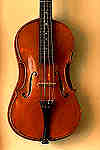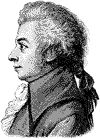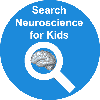 |
Music Education
Beyond the Mozart
Effect by Daisy T. Lu, Ph.D. Music Specialist, Cascade View Elementary School, Tukwila School District, WA Adjunct Faculty Member, Seattle Pacific University, Seattle, WA |
 |
 |
Music Education
Beyond the Mozart
Effect by Daisy T. Lu, Ph.D. Music Specialist, Cascade View Elementary School, Tukwila School District, WA Adjunct Faculty Member, Seattle Pacific University, Seattle, WA |
 |
 Since the late 1970s, education has
witnessed
two challenging trends: "Back to the Basics" and "Integration of the
Arts." As we enter the millennium two decades later, little has changed
in schools. This status quo is perhaps caused by ignorance and the
resulting unwillingness to change even when the scientific evidence is
obvious. We have seen the dangers of overly specialized education -
education that dispenses information but does not foster understanding.
The results of this provincialism can be seen in graduates who are skilled
but lacking in education, prepared for life's labor but not the fruits of
labor. Music is one such "fruit of labor." It is the language of
emotions. Not raw emotions but emotions corralled by intellect, emotions
rendered articulate. Music is a valuable key that opens the gate to world
history. It offers access to the souls of civilizations past and
civilizations still in the making - a ceaseless quest to wrench order from
chaos.
Since the late 1970s, education has
witnessed
two challenging trends: "Back to the Basics" and "Integration of the
Arts." As we enter the millennium two decades later, little has changed
in schools. This status quo is perhaps caused by ignorance and the
resulting unwillingness to change even when the scientific evidence is
obvious. We have seen the dangers of overly specialized education -
education that dispenses information but does not foster understanding.
The results of this provincialism can be seen in graduates who are skilled
but lacking in education, prepared for life's labor but not the fruits of
labor. Music is one such "fruit of labor." It is the language of
emotions. Not raw emotions but emotions corralled by intellect, emotions
rendered articulate. Music is a valuable key that opens the gate to world
history. It offers access to the souls of civilizations past and
civilizations still in the making - a ceaseless quest to wrench order from
chaos.
|
 Symbolic codification, such as notation in music, of thoughts and
experiences is a prerequisite to communication. This symbolism can be
expressed in word or art form. In Piaget's term, musical activities are
symbolic plays predominant in the pre-operational stage of child
development. Word and art represent thought processes inherent in
learning. Although our schools emphasize word symbols, we must now place
equal, if not more, emphasis on the use and interpretation of artistic
communication, allowing for the enhancement of creative and innovative
thinking, discovery of new ways to problem-solve, and broadening of
knowledge and skills in all areas of human behavior. What makes the arts
indispensable in both concrete and abstract learning is that it embodies
and unites cognitive, affective, and kinesthetic experiences as well as
their responses.
Symbolic codification, such as notation in music, of thoughts and
experiences is a prerequisite to communication. This symbolism can be
expressed in word or art form. In Piaget's term, musical activities are
symbolic plays predominant in the pre-operational stage of child
development. Word and art represent thought processes inherent in
learning. Although our schools emphasize word symbols, we must now place
equal, if not more, emphasis on the use and interpretation of artistic
communication, allowing for the enhancement of creative and innovative
thinking, discovery of new ways to problem-solve, and broadening of
knowledge and skills in all areas of human behavior. What makes the arts
indispensable in both concrete and abstract learning is that it embodies
and unites cognitive, affective, and kinesthetic experiences as well as
their responses.
 If education aims to integrate thought, then feeling and action should be fundamental. The multiple areas of the brain must be engaged for learning to take long-term effect. Eurhythmics is one concept which begins with education in rhythm, the life force in nature, the inner pulse of humankind. Music education should be primarily concerned with stimulating, cultivating and preserving this heightened sense of rhythm. Any complication in meter must be heard and felt. It isn't mathematics that solves the problem, but the aural image plus its physical interpretation - a progression toward a goal that establishes a musical resolution. Founded by Swiss musician-educator, Emile Jacques-Dalcroze, Eurhythmics integrates rhythmic movement, ear training and improvisation. Rhythmic movement in response to intelligent and sensitive listening develops both tonal and rhythmic concepts, and thereby enhances deep understanding, enjoyment, and performance of music. |
 All music has rhythm. It is movement heard, felt, and seen.
Listening to Mozart's music and focusing on rhythm alone involves
attention to complex elements that provide temporal cohesion in music and
organizes and structures sounds in time. Rhythm embodies beat, pulse,
accent, meter, duration, tempo, density, texture, form, and rhythmic
patterns. If one were to listen to music with all these in mind,
certainly the brain will be well stimulated. Yet musical elements go
beyond rhythm to include melody, harmony, timbre, style, dynamics, meaning
and emotion. Eurhythmics activates a feeling for music which, in Greek
terms, includes dance and drama. A sense of order and balance is created
internally, and imagination develops simultaneously. Such an approach to
music education encompasses cognitive, affective, and psychomotor
behaviors.
All music has rhythm. It is movement heard, felt, and seen.
Listening to Mozart's music and focusing on rhythm alone involves
attention to complex elements that provide temporal cohesion in music and
organizes and structures sounds in time. Rhythm embodies beat, pulse,
accent, meter, duration, tempo, density, texture, form, and rhythmic
patterns. If one were to listen to music with all these in mind,
certainly the brain will be well stimulated. Yet musical elements go
beyond rhythm to include melody, harmony, timbre, style, dynamics, meaning
and emotion. Eurhythmics activates a feeling for music which, in Greek
terms, includes dance and drama. A sense of order and balance is created
internally, and imagination develops simultaneously. Such an approach to
music education encompasses cognitive, affective, and psychomotor
behaviors.
"A pre-requisite of the ability to think is the construction of internal representations of external events. The processes involved in organizing and structuring perceptual information into sensori-motor schemata are invaluable aids to higher mental processes." - Lindsay and Norman, 1972 - |
 Classical compositions demonstrate how these concepts can be
integrated in the music lesson. Vivaldi's "Four Seasons" is
perfect music
for exploring story line and dynamic changes. Finding a physical movement
that mimics the rhythmic idea is a creative challenge. Mozart's
Andante
from Concerto in C Major may have its full meaning felt more deeply with
these added words. "Reach....., and higher, and higher..... then I'm
floating down." Beethoven's Scherzo from Symphony Number 1: "I
want to
go; I don't want to go" can go with pantomime, hands on hips, and the
changing of directions and focus at certain musical phrasing. Haydn's
Third Movement in Symphony Number 94 (Surprise Symphony) may have
these
words added for more intense participation, "Touch, touch, touch, touch,
touch, touch; reach ....." while patting different parts of the body with
the hands in quick succession, and then reaching skyward on the word,
"Reach." Repeat the motive until the "surprise" when the students
instantly make a big jump and freeze. Examples of active listening and
involvement in musical activities demonstrate how the different parts of
the brain can be stimulated to bring about true understanding in
meaningful and interesting ways.
Classical compositions demonstrate how these concepts can be
integrated in the music lesson. Vivaldi's "Four Seasons" is
perfect music
for exploring story line and dynamic changes. Finding a physical movement
that mimics the rhythmic idea is a creative challenge. Mozart's
Andante
from Concerto in C Major may have its full meaning felt more deeply with
these added words. "Reach....., and higher, and higher..... then I'm
floating down." Beethoven's Scherzo from Symphony Number 1: "I
want to
go; I don't want to go" can go with pantomime, hands on hips, and the
changing of directions and focus at certain musical phrasing. Haydn's
Third Movement in Symphony Number 94 (Surprise Symphony) may have
these
words added for more intense participation, "Touch, touch, touch, touch,
touch, touch; reach ....." while patting different parts of the body with
the hands in quick succession, and then reaching skyward on the word,
"Reach." Repeat the motive until the "surprise" when the students
instantly make a big jump and freeze. Examples of active listening and
involvement in musical activities demonstrate how the different parts of
the brain can be stimulated to bring about true understanding in
meaningful and interesting ways.
|
|
|
Bibliography: Bamberger, J. (1991). The mind behind the musical ear: How children develop musical intelligence. Cambridge: MA: Harvard University Press, p. 290. Begley, S. (1996). Your child's brain. Newsweek, CXXVII, 8, 54-62. Driver, A. (1973). Music and movement. London: Oxford University Press. Dutoit, C. L. (1977). Music movement therapy. London & Whitstable: The Riverside Press Ltd. Healy, J.M. (1990). Endangered minds: Why children don't think and what we can do about it. New York: Simon and Schuster, p. 382. Jalongo, M.R. & Stamp, L.M. (1997). The arts in children's lives. Boston: Allyn and Bacon. Lindsay, P.H. & Norman, D.A. (1972). Human information processing; an introduction to psychology, New York, Academic Press 1972. Nash, J.M. (1997). Fertile minds. Time. 149 (5), 48-63. Rauscher, F.H., Shaw, G.L., Levine, L.J., Wright, E.L., Dennis, W.R., & Newcomb, R.L. (1997). Music training causes long-term enhancement of pre-school children's spiritual-temporal reasoning. Neurological Research, 19: 2-8. Schnebly-Black, J. & Moore, S. F. (1997).The rhythm inside: Connecting body, mind and spirit through music. Portland, OR: Rudra Press, p. 147. Serafine, M.L. (1988). Music as cognition: The development of thought in sound. N.Y.: Columbia University Press, p. 247. Sloboda, J. & Deliege, I. (1996). Musical beginnings: Origins and development of musical play in early childhood. General Music Today, 3 (2), 19-20. Weinberger, N.M. (1997). Neurobiology of the benefits of music. IV (1). Available at MuSICA: Music and Science Information Computer Archive. [http://www./musica.uci.edu]. |
| GO TO: | Music and the Brain | Explore the Nervous System |
| Experiments and Activities | Table of Contents |
![[email]](./gif/menue.gif) Send E-mail |
 Get Newsletter |
 Search Pages |